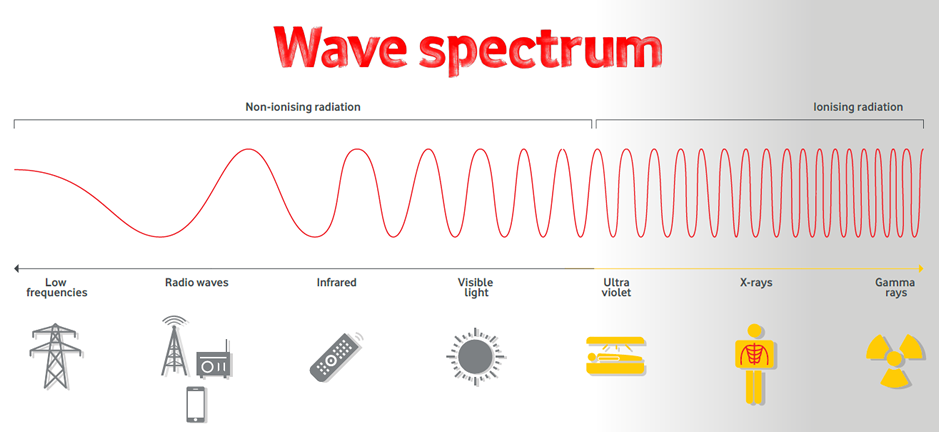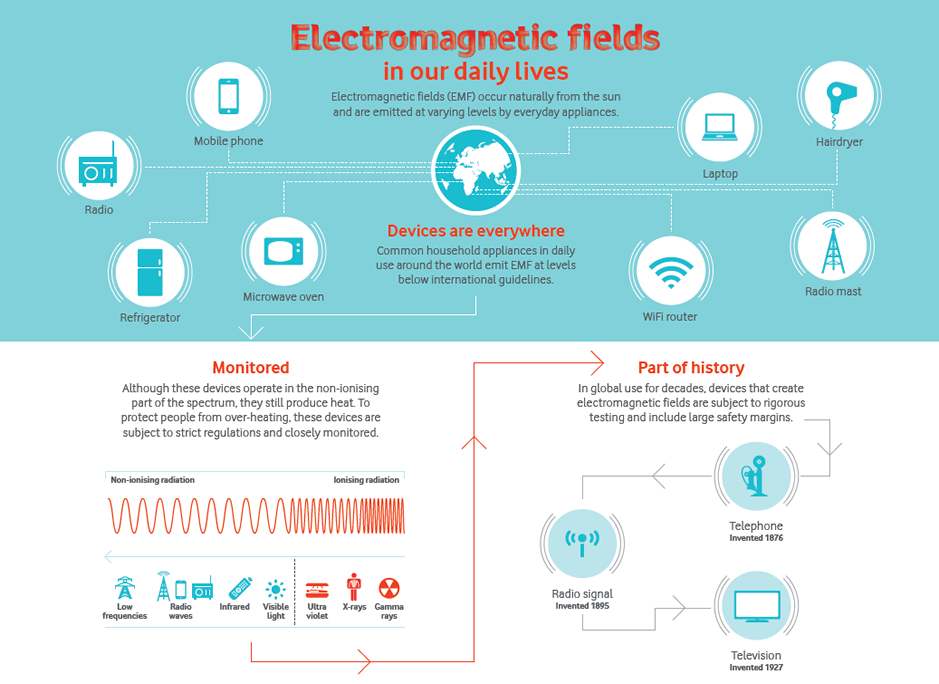Base stations and health
Base stations are designed to send and receive electrical signals from mobile devices and relay them to a core switching centre. Each base station consists of antennas and a cabinet with equipment to power it. The antennas are usually fixed to a support structure, which is known as a mast.
Your mobile phone only works if it can connect to a base station. The majority of experts and national advisory boards say there is no scientific reason to distance base stations from places where people live and work, as long as the International Commission on Non-Ionizing Radiation Protection (ICNIRP) guidelines are adhered to. These guidelines include a substantial safety margin.
The World Health Organization (WHO) fact sheet on base stations and wireless technologies states that:
“…There is no convincing scientific evidence that the weak RF (radio frequency) signals from base stations and wireless networks cause adverse health effects.”
Surveys have shown that the RF exposures from base stations range from 0.002% to 2% of the levels of international exposure guidelines, depending on a variety of factors such as the proximity to the antenna and the surrounding environment.
Mobile devices and health
Your mobile device converts radio waves into electrical signals in order to send and receive your communications. At its peak (when the phone is turned on), power use ranges between 0.1 and 2 watts. The radio waves that mobile devices rely on are at the non-ionising end of the electromagnetic spectrum. While a mobile device is used close to the human body, a small amount of energy from the radio waves is absorbed and this is converted into heat.
Scientific research has concluded that a temperature rise of no more than one degree Celsius is a safe level for the body. Our normal biological processes cool us down and prevent any significant temperature rise in our bodies.
The vast majority of experts, including the WHO, agree that mobiles, operated in line with international guidelines, do not produce enough energy – and therefore heat – to cause long-term changes in the body.
WHO periodically reviews the science and is currently conducting another risk assessment of radio frequency electromagnetic fields. This is based on an extensive review of scientific studies published since their first review in 1993 and is due to be published inbetween 2017 and 2018.

 Lesotho
Lesotho Tanzania (EN)
Tanzania (EN) DR Congo
DR Congo Mozambique
Mozambique South Africa
South Africa

